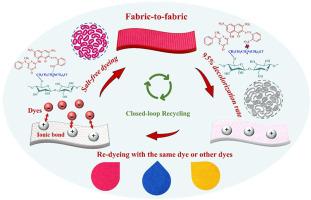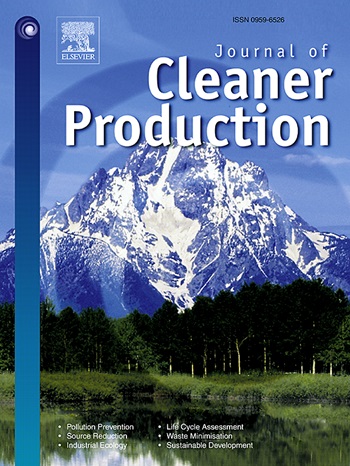Efficient color management in closed-loop recycling of cotton fabrics by using fiber modification and salt-free dyeing strategy
IF 9.7
1区 环境科学与生态学
Q1 ENGINEERING, ENVIRONMENTAL
引用次数: 0
Abstract
Color management and efficient decolorization of waste textiles have become a central focus, driving the need for transformative approaches in cotton textile recycling. There is an urgent need to develop a waste cotton textile closed-loop recycling strategy that is integrated with a new dyeing method to achieve efficient color management. By the method of fiber modification, salt-free dyeing and effective decolorization were simultaneously achieved in this study. The results show that the salt-free dyed cotton fabrics exhibited a significantly improved decolorization rate compared with the conventionally dyed fabrics, with a decolorization rate higher than 95% when using non-reactive dyes and a salt-alkali method, while maintaining mechanical properties comparable to the control cotton fabric. It was revealed that covalent bonding plays a critical role in decolorization efficiency, whereas the decolorization of salt-free dyed fabrics primarily resulted from the disruption of ionic bonds between the dyes and cationized fibers. The recycling feasibility of salt-free dyed cotton fabrics was also confirmed by evaluating the re-dyeing performance of decolorized fabrics by dyes with different colors, and the performance of multiple dyeing-decolorization cycles showed good stability, laid a solid foundation for the closed-loop recycling of cotton fabrics. Notably, compared with the conventional dyeing method, this work not only improves the recycling efficiency of waste cotton fabrics, but also reduces 28.4% in chemical consumption, 67.1% in dyeing costs, and 83.3% in waste disposal per cumulative ton of fabric production, providing an economical and promising new strategy for the industrial application of textile recycling and color management methods for waste textiles.

求助全文
约1分钟内获得全文
求助全文
来源期刊

Journal of Cleaner Production
环境科学-工程:环境
CiteScore
20.40
自引率
9.00%
发文量
4720
审稿时长
111 days
期刊介绍:
The Journal of Cleaner Production is an international, transdisciplinary journal that addresses and discusses theoretical and practical Cleaner Production, Environmental, and Sustainability issues. It aims to help societies become more sustainable by focusing on the concept of 'Cleaner Production', which aims at preventing waste production and increasing efficiencies in energy, water, resources, and human capital use. The journal serves as a platform for corporations, governments, education institutions, regions, and societies to engage in discussions and research related to Cleaner Production, environmental, and sustainability practices.
 求助内容:
求助内容: 应助结果提醒方式:
应助结果提醒方式:


